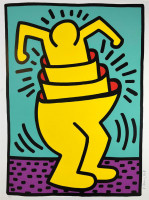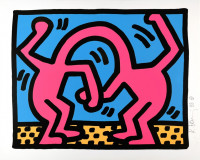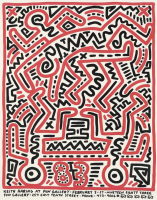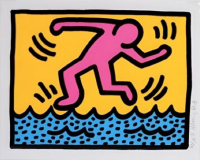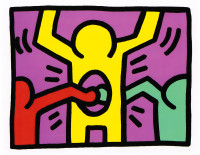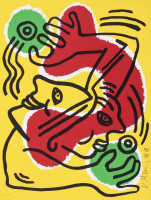Keith Haring
Keith Haring (États-Unis, 1958–1990) était un artiste et activiste social américain dont le style graphique audacieux est devenu iconique dans les années 1980. Inspiré par l'art de rue, le graffiti et la culture pop, Haring a créé des œuvres vibrantes abordant des thèmes comme l'amour, l'activisme et la sensibilisation au sida. Ses fresques publiques et son symbole du 'Radiant Baby' restent des emblèmes culturels mondialement reconnus.
- Ajouté récemment
- Prix (Elevé - Bas)
- Prix (Bas - Elevé)
- Année (Elevé - Bas)
- Année (Bas - Elevé)
Keith Haring
Untitled (Cup Man), 1989
Édition Limitée
Sérigraphie (Screen-print)
USD 90,000 - 120,000
Keith Haring
Icons (B) - Barking Dog, 1990
Édition Limitée
Sérigraphie/Silkscreen
USD 55,000 - 65,000
Keith Haring
Icons (A) - Radiant Baby, 1990
Édition Limitée
Sérigraphie/Silkscreen
USD 55,000 - 70,000
Keith Haring
Untitled (Plate 16) From The Blueprint Drawings, 1990
Édition Limitée
Sérigraphie (Screen-print)
USD 35,000 - 45,000
Keith Haring
Untitled (Plate 17) From The Blueprint Drawings, 1990
Édition Limitée
Sérigraphie (Screen-print)
USD 35,000 - 45,000
Keith Haring
The Story Of Red And Blue #5, 1989–90
Édition Limitée
Sérigraphie (Screen-print)
USD 4,500
Keith Haring
The Story Of Red And Blue #2, 1989-1990
Édition Limitée
Sérigraphie (Screen-print)
USD 4,500
Keith Haring
New Year's Invitation '88 (Nude) (TP), 1988
Édition Limitée
Sérigraphie (Screen-print)
USD 8,500
Keith Haring
Flowers III (Yellow), 1990
Édition Limitée
Sérigraphie (Screen-print)
USD 45,000 - 55,000
Keith Haring
Untitled 1 (from Free South Africa), 1985
Édition Limitée
Lithographie
Demander Le Prix
Keith Haring
Untitled - Scissors (from Pop Shop III), 1989
Édition Limitée
Sérigraphie (Screen-print)
Actuellement Indisponible
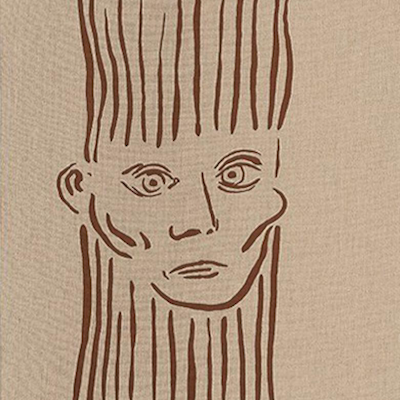
Qu'est-ce que la Figuration Libre?
La Figuration Libre est un mouvement artistique équivalent à la Bad Painting française et au néo-expressionnisme en Europe et en Amérique. Le terme a été inventé par Ben Vautier et le mouvement Fluxus. En 1981, Robert Combas, François Boisrond, Hervé Di Rosa et Rémi Blanchard ont formé le groupe Figuration Libre. Ce terme peut être interprété comme un art de style libre, mettant l'accent sur la spontanéité, la liberté et un rejet des conventions artistiques traditionnelles.




